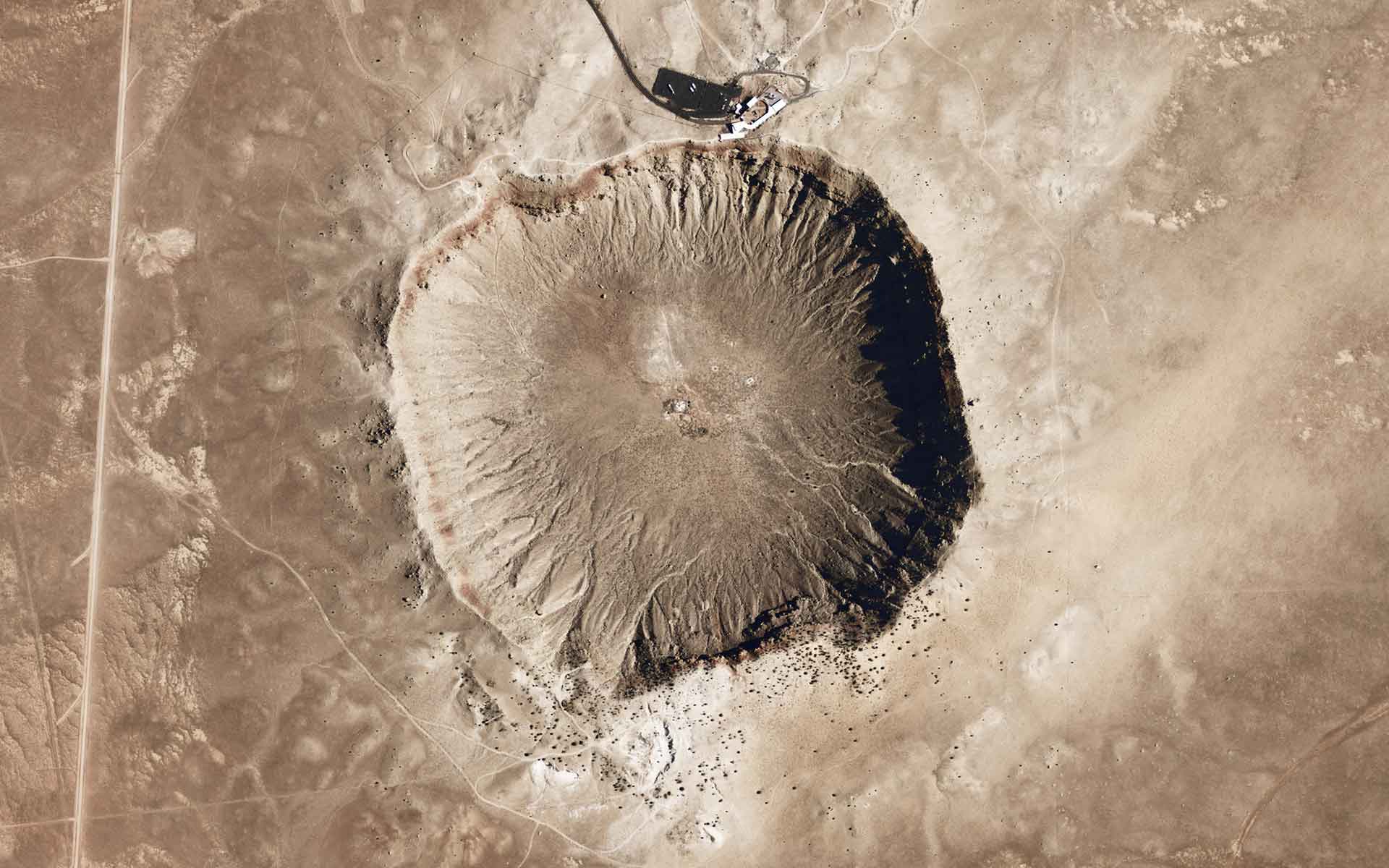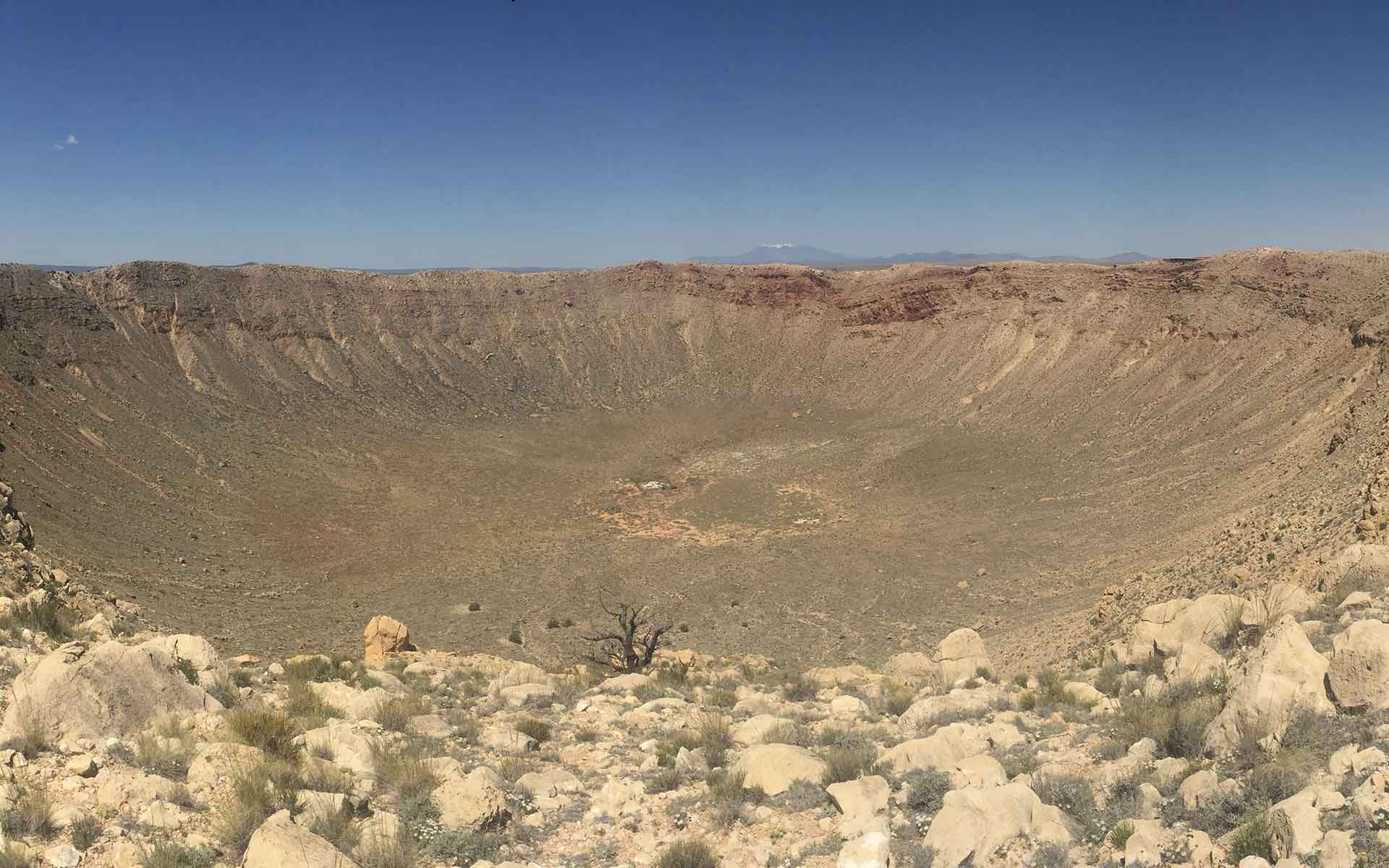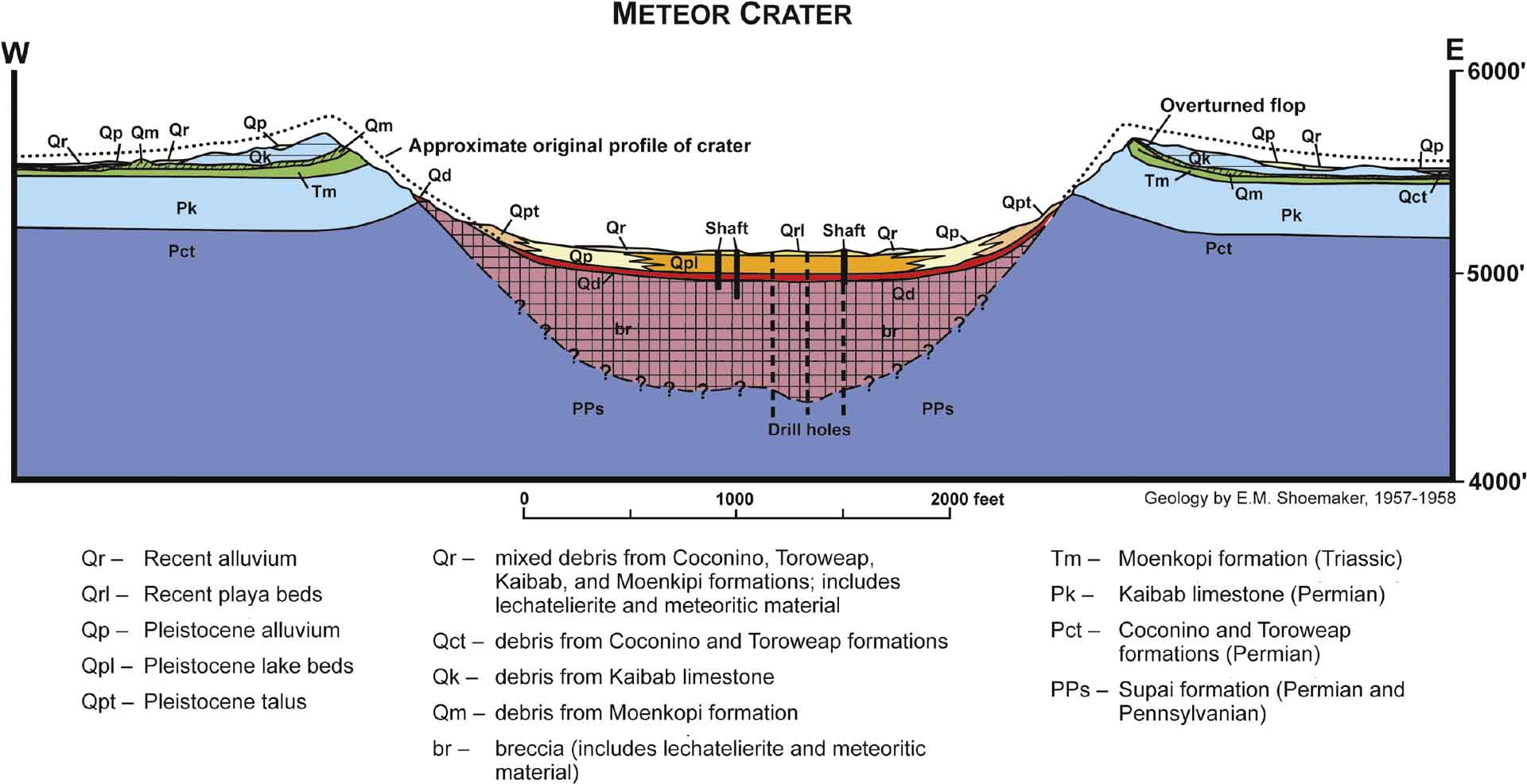
Satellite image of Meteor Crater. Credit: NASA Earth Observatory.
Geological Period
Holocene
Main geological interest
Impact structures and extraterrestrial rocks
History of geosciences
Location
Arizona, United States of America
35°01’41”N, 111°01’24”W
Satellite image of Meteor Crater. Credit: NASA Earth Observatory.
The Barringer Meteorite Crater aka "Meteor Crater" is one of the best preserved and exposed meteorite impact craters on Earth.
Barringer Crater, also known as Meteor Crater, is located in northern Arizona 60 kilometers east of Flagstaff. This is arguably the best-preserved and best-exposed meteorite impact crater on Earth and is considered the type locality on Earth of a simple impact crater. It was one of the first geological structures to be proposed as having been formed by the impact of an extraterrestrial object with the Earth – by Daniel M. Barringer in 1903. Subsequent studies of Meteor Crater played an important role in the recognition of shock metamorphism and our understanding of impact melting.
- Geological description
Meteor Crater formed ~50,000 years ago from the collision of an iron asteroid ~30-50 eters in diameter into flat-lying sedimentary rocks of the Colorado Plateau. These target rocks were, from oldest to youngest, the Coconino Sandstone (sandstone), the Toroweap Formation (limestone), and the Kaibab Formation (dolostone), all of Permian age, and the youngest rocks exposed at the surface – then and today – the Triassic Moenkopi Formation.
Fragments of the projectile have been discovered and are known as the Canyon Diablo Meteorite, named after the nearby Cañon Diablo.
Meteor Crater is classed as a simple impact crater. It possesses a bowl-shaped crater 1,200 meters across and 170 meters deep. Its rim rises 45 meters above the surrounding plains. Buried beneath a few ten’s of meters of sediment is a lens of crater-fill impactites, comprising impact breccias with minor amounts of admixed shock-melted materials; these melts are typically mixtures of the sedimentary target rocks and the iron meteorite projectile. The rim of Meteor Crater is composed of uplifted and overturned target rocks overlain by blocks and breccias that together constitute the impact ejecta blanket.
- Scientific research and tradition
Meteor Crater has been the focus of scientific research for over a century and ongoing studies continue to contribute to our understanding of impacts. This site was used for training Apollo astronauts and, now, for Artemis. Its museum has introduced over 12 million people to the wonder of meteorite impacts.
- Reference
Barringer, D.M. (1905) ‘Coon Mountain and Its Crater’, Proceedings of the Academy of Natural Sciences of Philadelphia, 57. Available at: https://scholar.archive.org/work/nmostybzdvffnl77cc4ibnrhpq.
Chao, E.C.T., Shoemaker, E.M. and Madsen, B.M. (1960) ‘First Natural Occurrence of Coesite’, Science, 132(3421), pp. 220–222. Available at: https://doi.org/10.1126/science.132.3421.220.
Foote, A.E. (1891) ‘A new locality for meteoric iron with a preliminary notice of the discovery of diamonds in the iron’, American Journal of Science, s3-42(251), pp. 413–417. Available at: https://doi.org/10.2475/ajs.s3-42.251.413.
Kieffer, S.W. (1971) ‘Shock metamorphism of the Coconino Sandstone at Meteor Crater, Arizona’, Journal of Geophysical Research (1896-1977), 76(23), pp. 5449–5473. Available at: https://doi.org/10.1029/JB076i023p05449.
Kring, D.A. (2017) ‘Guidebook To the Geology of Barringer Meteorite Crater, Arizona (Aka Meteor Crater)’, LPI Contributions, 2040. Available at: https://ui.adsabs.harvard.edu/abs/2017LPICo2040…..K.
Osinski, G.R. et al. (2015) ‘Impact melt- and projectile-bearing ejecta at Barringer Crater, Arizona’, Earth and Planetary Science Letters, 432, pp. 283–292. Available at: https://doi.org/10.1016/j.epsl.2015.10.021.
- Author(s)
Gordon Osinski.
University of Western Ontario. Canada.
Aaron Cavosie.
Curtin University. Australia.
Drew Barringer.
Barringer Crater Company. USA.
Alexandra Hart.
Barringer Crater Company. USA.
Matt Kent.
Meteor Crater Enterprises. USA.
Christian Koeberl.
University of Vienna. Austria.
Jennifer Wadsworth.
Barringer Crater Company. USA.


